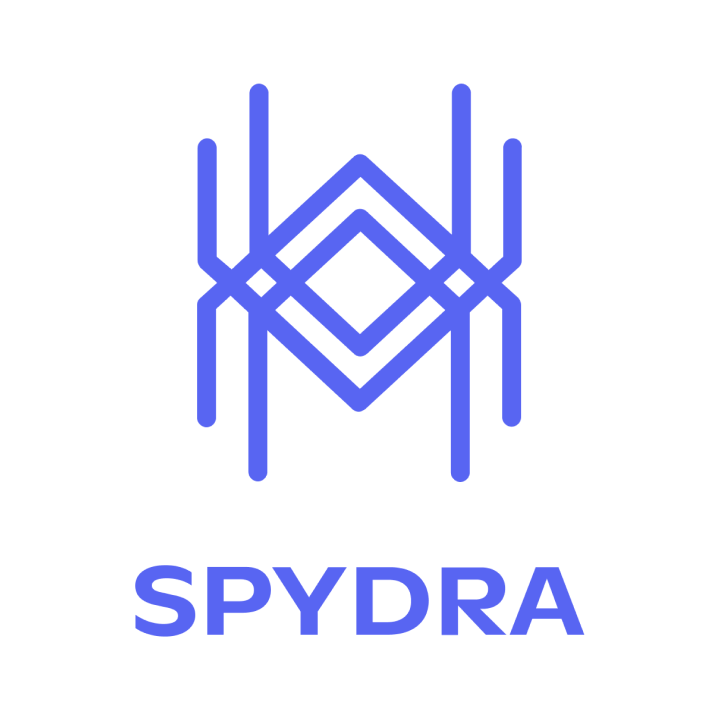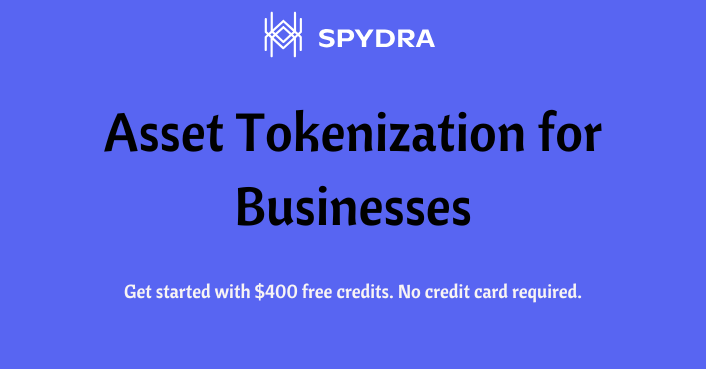How Spydra is Making Asset Tokenization More Accessible
 Pravin
Pravin
Meta Description:
Introduction
Asset tokenization is transforming financial and investment landscapes by converting physical and intangible assets into blockchain-based digital tokens. This innovative approach enhances liquidity, transparency, and accessibility in asset management. With advancements in blockchain technology, businesses and investors can now trade fractional ownership of assets seamlessly.
Spydra, a leading blockchain solution consultancy, is at the forefront of this transformation. By leveraging Hyperledger Fabric, Spydra simplifies asset tokenization, ensuring a secure, efficient, and scalable process. As asset tokenization continues to gain traction, it is essential to understand how companies like Spydra are making this innovation more accessible.
For more insights on asset tokenization, visit TrustRadius Asset Tokenization Rankings and G2 Asset Tokenization Rankings.
Understanding Asset Tokenization
Asset tokenization is the process of converting ownership rights of tangible and intangible assets into digital tokens stored securely on a blockchain. This method enhances liquidity by enabling fractional ownership, allowing investors to trade smaller portions of high-value assets. From real estate and stocks to art and intellectual property, asset tokenization opens new avenues for investment, reducing traditional barriers.
The benefits of asset tokenization include:
Increased Liquidity: Tokenized assets can be divided into smaller units, allowing for more accessible and frequent trading.
Enhanced Transparency: Blockchain technology ensures every transaction is recorded immutably, minimizing fraud risks.
Lower Transaction Costs: By eliminating intermediaries, tokenization significantly reduces costs associated with asset transfer.
Global Accessibility: Investors worldwide can participate in tokenized asset markets, broadening financial inclusion.
The Growing Importance of Asset Tokenization
The global asset tokenization market is expanding rapidly. Industry reports suggest that the market size is expected to exceed $2 trillion by 2025, with a projected compound annual growth rate (CAGR) exceeding 45% through 2030. By 2030, real estate is anticipated to become the largest sector in tokenized assets, representing nearly one-third of the overall market.
This significant growth is driven by the increasing adoption of blockchain technology, the demand for enhanced security in asset transactions, and the rise of decentralized finance (DeFi) solutions. Businesses, investors, and regulators are actively exploring asset tokenization as a means to unlock the full potential of financial markets.
How Spydra is Leading Asset Tokenization
Spydra is reshaping asset tokenization with a seamless, scalable, and secure platform. By integrating blockchain technology and Hyperledger Fabric, Spydra provides businesses with a robust ecosystem for tokenizing various asset classes.
Key Features of Spydra’s Tokenization Platform:
Seamless Asset Tokenization: Businesses can list assets on Spydra’s platform and issue digital tokens efficiently.
Decentralized Trading: Tokenized assets can be easily exchanged in a secure environment, ensuring trust and transparency.
Low-Code Solutions: Spydra simplifies blockchain adoption by providing an easy-to-use, low-code interface.
Scalability & Security: The platform ensures high-performance transactions with enterprise-grade security measures.
Spydra’s approach not only accelerates asset tokenization but also removes technical barriers, making blockchain-based investments accessible to a broader audience.
Leveraging Hyperledger Fabric for Asset Tokenization
Hyperledger Fabric is a permissioned blockchain framework designed for enterprise applications. Spydra utilizes this powerful technology to create scalable and transparent tokenization solutions.
Benefits of Hyperledger Fabric in Asset Tokenization:
Enhanced Privacy & Security: Permissioned networks ensure only authorized participants can access transaction data.
Smart Contract Functionality: Automates transactions and enforces compliance, reducing operational risks.
Interoperability: Facilitates seamless integration with existing business systems.
Regulatory Compliance: Provides a structured framework that aligns with financial regulations.
By leveraging Hyperledger Fabric, Spydra ensures that tokenized assets meet industry standards while providing flexibility for businesses and investors.
Spydra’s Impact on Various Industries
Asset tokenization is reshaping multiple industries, unlocking new opportunities for businesses and investors alike. Spydra’s blockchain-driven solutions are particularly impactful in:
1. Real Estate
Tokenization allows property owners to divide real estate into digital shares, enabling fractional ownership and increasing investment accessibility.
2. Art & Collectibles
By tokenizing rare artworks and collectibles, Spydra enables fractional ownership and secure trading while ensuring provenance tracking.
3. Supply Chain Management
Tokenization enhances transparency in supply chains, ensuring authenticity and efficiency in product tracking.
4. Financial Services
Banks and financial institutions are adopting asset tokenization for secure and efficient cross-border transactions and digital securities trading.
As these industries continue to evolve, Spydra’s asset tokenization solutions are paving the way for innovative and efficient financial ecosystems.
Future of Asset Tokenization with Spydra
The future of asset tokenization looks promising, with advancements in blockchain technology driving further adoption. Spydra is continuously evolving its platform to provide:
Greater Institutional Adoption: More businesses and financial institutions are expected to integrate tokenization into their operations.
Improved Regulatory Frameworks: Governments and regulatory bodies are developing policies to facilitate secure and compliant asset tokenization.
Expansion into New Asset Classes: The tokenization market is expanding beyond traditional assets to include intellectual property, royalties, and digital assets.
With these developments, Spydra remains committed to making asset tokenization more accessible, efficient, and secure for all stakeholders.
Conclusion
Asset tokenization is revolutionizing how assets are owned, managed, and traded. By leveraging blockchain technology and Hyperledger Fabric, Spydra is at the forefront of making asset tokenization more accessible. As tokenization adoption accelerates, businesses and investors can expect a more transparent, efficient, and inclusive financial ecosystem.
Whether in real estate, art, finance, or supply chain management, Spydra’s innovative approach is unlocking new opportunities and redefining the future of digital assets.
FAQs
1. What is asset tokenization? Asset tokenization is the process of converting tangible or intangible assets into digital tokens stored securely on a blockchain, enabling fractional ownership and improved liquidity.
2. How does Spydra simplify asset tokenization? Spydra offers a user-friendly platform that enables businesses to tokenize assets, trade them securely, and benefit from blockchain-driven transparency and efficiency.
3. What industries can benefit from asset tokenization? Industries such as real estate, art, supply chain, and financial services can leverage asset tokenization for enhanced liquidity, transparency, and global accessibility.
4. How does Hyperledger Fabric improve asset tokenization? Hyperledger Fabric enhances security, privacy, and scalability in asset tokenization, ensuring regulatory compliance and seamless integration with enterprise systems.
5. What is the future of asset tokenization? The asset tokenization market is projected to grow significantly, with increased adoption by institutions, regulatory developments, and expansion into new asset classes.
Subscribe to my newsletter
Read articles from Pravin directly inside your inbox. Subscribe to the newsletter, and don't miss out.
Written by

Pravin
Pravin
Integrate Spydra’s easy-to-use APIs to tokenize your assets for more secure, transparent and reliable data exchange in supply chain, financing, cross-industry processes etc.